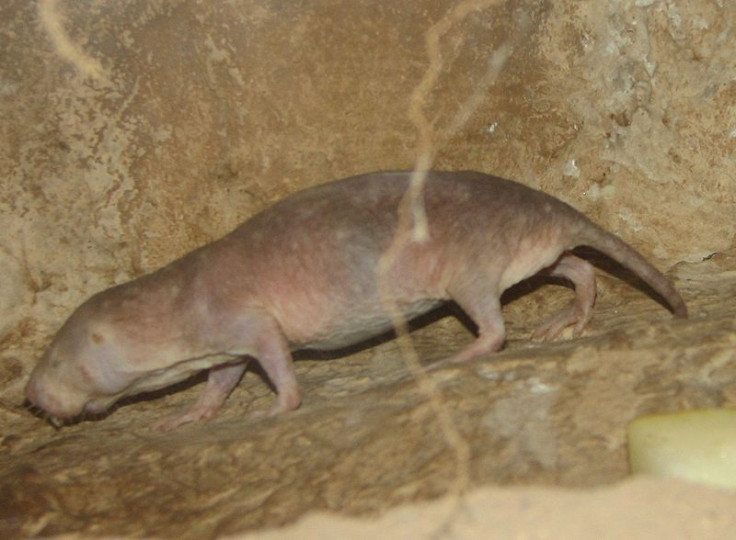Cancer Cure Found In Naked Mole Rats? Chemical, Hyaluronan, May Contain Anti-Cancer Properties

For years, scientists have been trying to figure out why 90 percent of mice and rats die from cancer after three to four years, but African naked mole rats and their Middle Eastern cousin, the blind mole rat, are able to live for decades, not once developing cancer. In a new study, researchers have finally discovered the chemical responsible for this phenomena.
Lead researchers Vera Gorbunova and Andrei Seluanov already knew from a previous study that a mole rat's cells undergo what's called "concerted cell death" in which the mole rat's body cuts off oxygen to all cells affected by potentially cancerous growth, killing the cancer before it has the chance to spread. They believed that due to the mole rat's living environment deep underground, where oxygen levels are low, they were able to stop growth of cancer cells, which need more oxygen than normal to reproduce excessively.
"Living in a low-oxygen environment may lead to evolution of anticancer defenses by mechanisms we do not yet fully understand," Gorbunova, professor of biology and oncology at University of Rochester, said.
Gorbunova and her team of researchers also hypothesized that if they could find the genes responsible, they would be one step closer to understanding how the mole rats became cancer resistant.
"Humans do not have [the] same [anticancer] mechanism," Gorbunova said, "but do have all the required genes."
In her new study, her team of researchers tried growing skin cells from mole rats in a laboratory. However, soon after, they noticed something strange happening. A syrupy, thick substance was clogging their vacuum pumps and tubing. It was different than any of the other animals' cells they were studying, which included humans, mice, and guinea pigs.
To put it simply, Seluanov said, "We needed to understand what the goo was."
They identified the goo as high molecular weight hyaluronan (HMW-HA) — or just hyaluronan (HA) for short — a sugar that's commonly secreted in the skin, cartilage, and other connective tissues of mammals. It's one of several molecules that supports cells by filling in the gaps between them. However, compared to humans, the mole rats produced HA that was not only more abundant, but also five times bigger. They also were very slow at recycling HA, which is why there was an abundance in their bodies.
The researchers tested HA's role in cancer development, and discovered that when HA was removed from the mole rat cells, they developed tumors in the same way that humans did. In addition to this, the team also found the gene responsible for HA production, called HAS2. Although the same gene can be found in other animals, the one in the mole rats was a different version.
Seluanov believes the larger HA are able to cage potential cancer cells, preventing them from spreading and growing into tumors. This reaction also allowed for what's called "contact inhibition," a process in which the cells stop growing if overcrowding occurs — an important cellular process when considering that healthy cells grown in a dish form flat layers whereas cancerous cells will grow to the point that they begin to pile up.
While Seluanov believes HA is the "primary anti-cancer mechanism," he also points out that they are slightly elastic and surrounded with water molecules, making the mole rat's skin loose, stretchy, and slick. He says it allows the mole rat to get through the tight underground tunnels without scratching or ripping itself on rocks or dirt-and its anticancer mechanism is just an added bonus.
Future research from this team will explore whether HA from naked mole rats has any clinical value for treating cancer in humans, however, other research has shown that HA can either prevent or cause cancer.
Bryan Toole, from the Medical University of South Carolina, says that although large versions of HA can stop cancer, smaller ones can cause it to develop. He suggests that since some tumors have been associated with inflammation; while larger HA can stop inflammation, smaller ones will make it worse.
Sources:
Gorbunova V, Seluanov A, Hine C, et al. Cancer resistance in the blind mole rat is mediated by concerted necrotic cell death mechanism. PNAS. 2012.
Gorbunova V, Seluanov A, Tian X, et al. High-molecular-mass hyaluronan mediates the cancer resistance of the naked mole rat. Nature. 2013.
Published by Medicaldaily.com



























